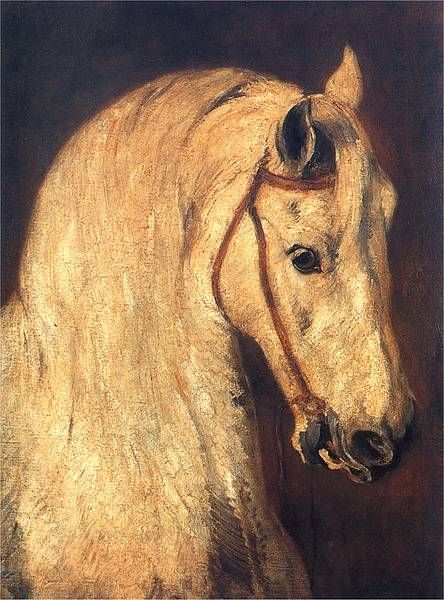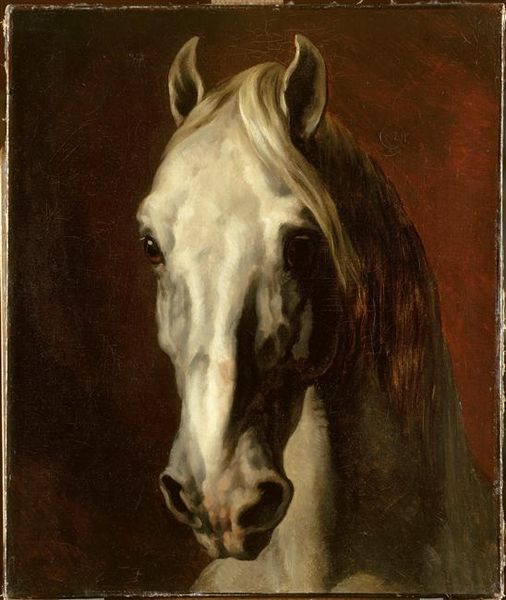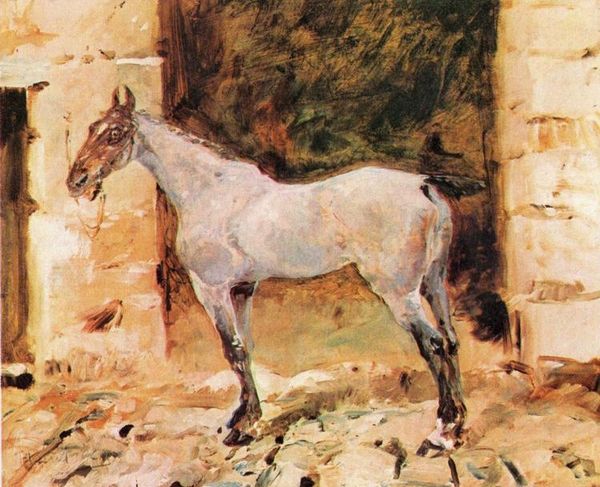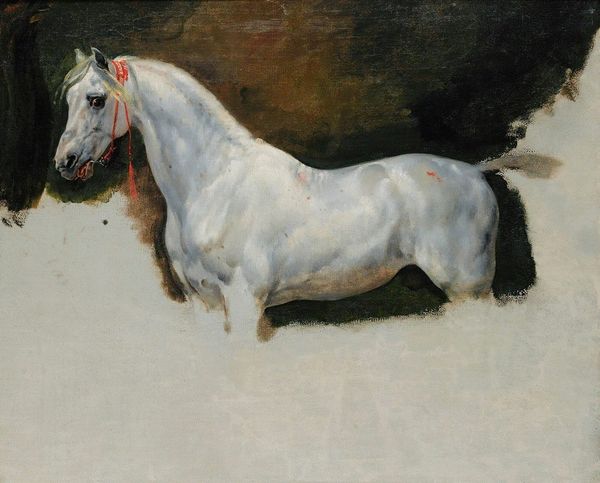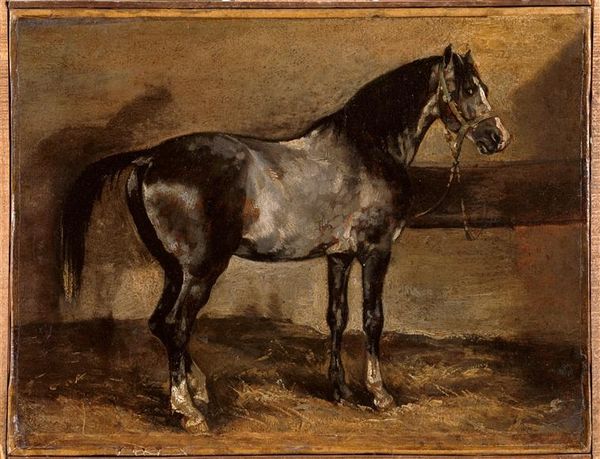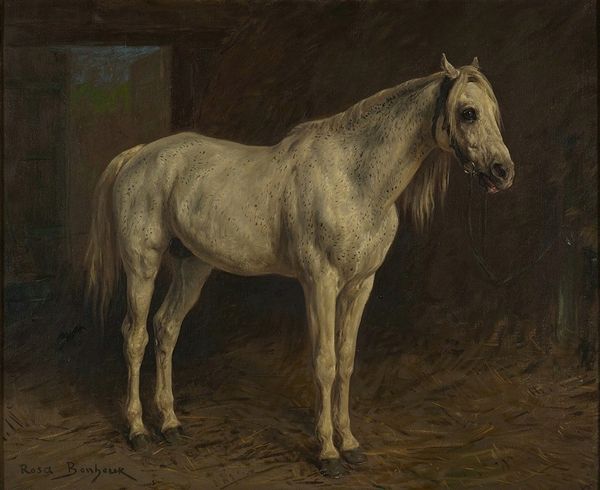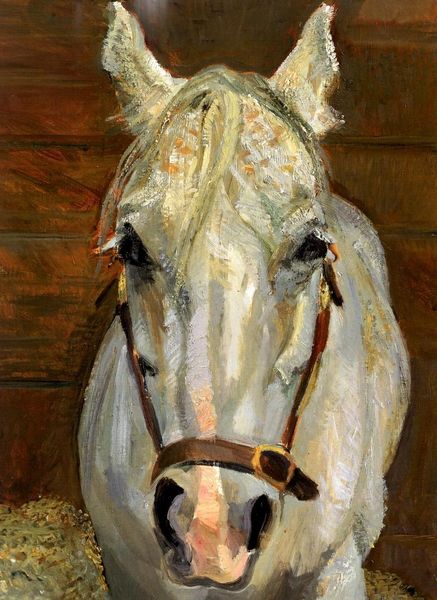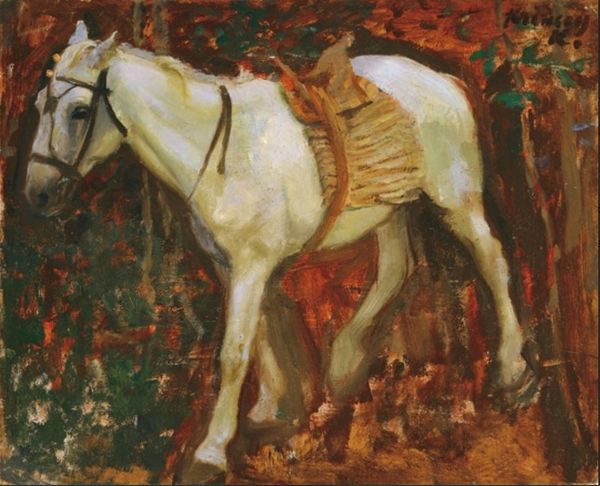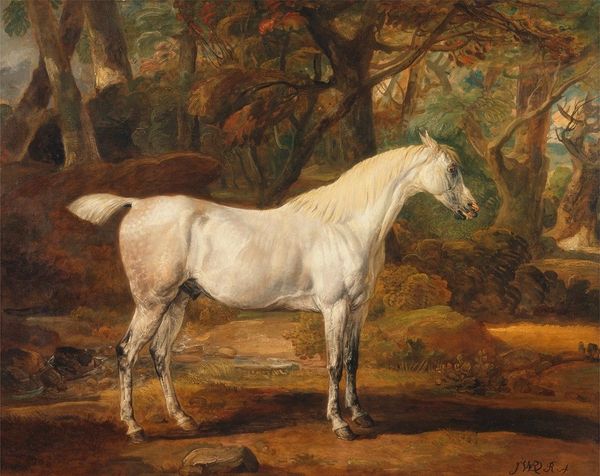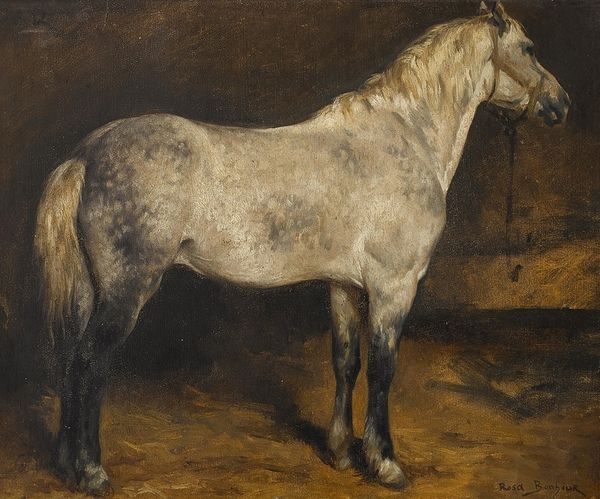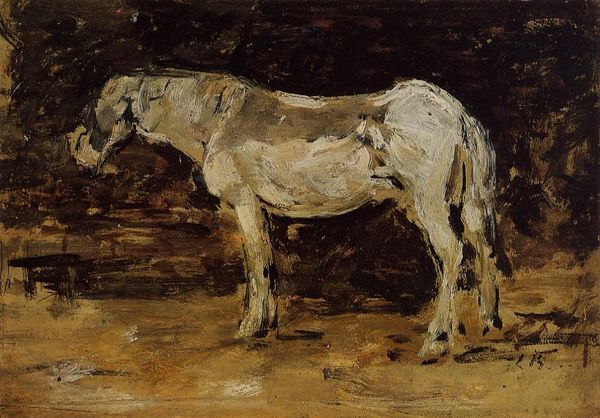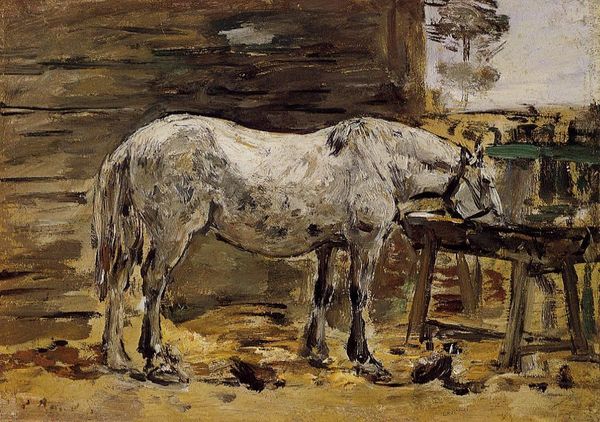
painting, oil-paint, fresco
#
portrait
#
animal
#
painting
#
impressionism
#
oil-paint
#
fresco
#
oil painting
#
horse
Dimensions: 61 x 49.5 cm
Copyright: Public domain
Curator: Here we have Henri de Toulouse-Lautrec's 1881 painting, "White Horse 'Gazelle.'" It's a stunning piece painted in oil on, it appears, fresco. Editor: It’s strikingly melancholic. The horse’s gaze is heavy, and the darkness surrounding it amplifies that sense of… captivity, maybe? You can almost smell the stable, the horse, the straw in this image; it's heavy and sensual, which speaks to the oil paint. Curator: Indeed, Lautrec, though young at the time, had a keen eye for capturing emotion. The "Gazelle" was created in the time when country life with the horses and fields dominated painting exhibitions. Note the horse's subdued elegance - the aristocratic symbol and one with deeply patriarchal roots here looks calm in his stall. The scene contrasts starkly with Lautrec's later, more scandalous subjects found within Montmartre. Editor: Right, and consider the physicality of fresco painting alongside oil, especially combined, for depicting an animal so intrinsically tied to labor and aristocratic pursuits. Fresco is, fundamentally, about surface, texture, a social context tied to building. Oil, then, adds this remarkable luminosity to something quite mundane and reveals how art elevates even ordinary life into beautiful visual records of time and being. Curator: Precisely. There's a tension between the raw physicality, as you noted, and this sense of refinement and class distinction that existed through animals. You see, the history of equestrian painting is inseparable from the rise of aristocratic power in the art world and world at large. How does the painter and painting perpetuate power here? Editor: Hmmm… By subtly challenging the medium and composition? We know his later works upended social norms. Perhaps it is a proto-rebellion, focusing more on the individual animal – Gazelle – rather than celebrating broader social and political hierarchies linked to equine imagery. I find something radically democratic, materially, in the artmaking. Curator: An interesting suggestion. "Gazelle" is a snapshot of a society in flux, captured by an artist on the cusp of finding his own, revolutionary, visual voice. The painting challenges the conservative art traditions through which it was created. Editor: For me, thinking about Lautrec working this painting – oil on top of fresco and the time needed for drying reveals his mastery. It also humanizes not just Gazelle, but all work in the arts. Curator: Very well said. Thank you.
Comments
No comments
Be the first to comment and join the conversation on the ultimate creative platform.
